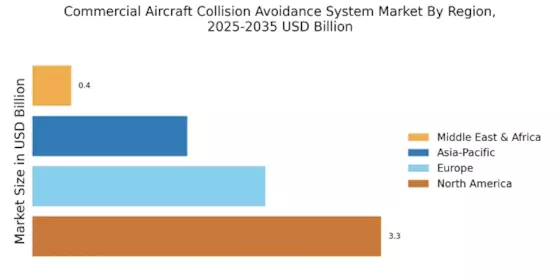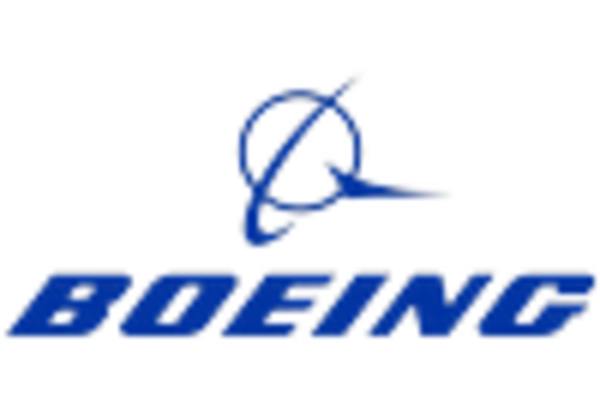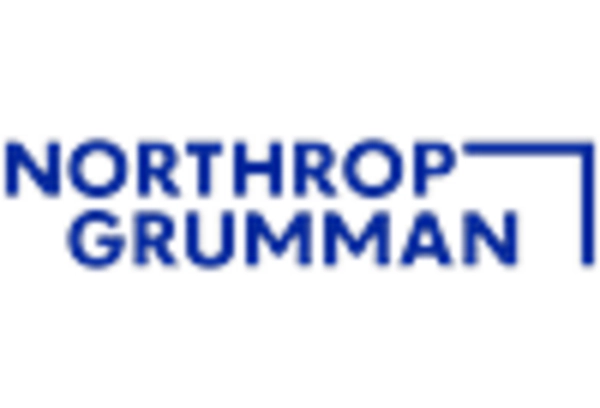Regulatory Pressures
Regulatory pressures play a crucial role in shaping the Commercial Aircraft Collision Avoidance System Market. Governments and aviation authorities worldwide are increasingly mandating the implementation of advanced collision avoidance systems to enhance air safety. For instance, the Federal Aviation Administration has set stringent guidelines for the adoption of such technologies in new aircraft models. This regulatory environment compels manufacturers to invest in research and development to comply with safety standards. As a result, the market is witnessing a surge in demand for certified collision avoidance systems, which is expected to drive market growth. The increasing focus on safety regulations indicates that compliance will remain a significant driver in the Commercial Aircraft Collision Avoidance System Market.
Increased Focus on Safety
An increased focus on safety within the aviation sector is driving the Commercial Aircraft Collision Avoidance System Market. Airlines and manufacturers are prioritizing the implementation of advanced safety measures to protect passengers and crew. This heightened emphasis on safety is reflected in the growing investment in collision avoidance technologies, which are designed to prevent mid-air collisions and enhance situational awareness for pilots. Recent statistics indicate that the aviation industry is investing billions in safety technologies, with a notable portion allocated to collision avoidance systems. This trend suggests that the commitment to safety will continue to be a primary driver in the Commercial Aircraft Collision Avoidance System Market, as stakeholders recognize the importance of maintaining high safety standards.
Technological Advancements
The Commercial Aircraft Collision Avoidance System Market is experiencing rapid technological advancements that enhance the safety and efficiency of air travel. Innovations such as improved radar systems, enhanced algorithms for threat detection, and integration with artificial intelligence are becoming increasingly prevalent. These advancements not only improve the accuracy of collision avoidance systems but also reduce false alarms, thereby increasing pilot confidence. According to recent data, the market for advanced collision avoidance systems is projected to grow at a compound annual growth rate of approximately 7% over the next five years. This growth is driven by the need for more sophisticated systems that can handle complex air traffic scenarios, making technological innovation a key driver in the Commercial Aircraft Collision Avoidance System Market.
Integration with Next-Gen Avionics
The integration of collision avoidance systems with next-generation avionics is emerging as a key driver in the Commercial Aircraft Collision Avoidance System Market. As aircraft become more technologically advanced, the need for seamless integration of various systems is paramount. Modern avionics systems are increasingly incorporating collision avoidance functionalities, allowing for real-time data sharing and improved decision-making capabilities for pilots. This integration not only enhances safety but also streamlines operations, making it a compelling proposition for airlines. Market forecasts suggest that the avionics segment will witness substantial growth, with collision avoidance systems being a critical component. This trend indicates that the synergy between avionics and collision avoidance technologies will significantly influence the Commercial Aircraft Collision Avoidance System Market.
Market Expansion in Emerging Regions
The Commercial Aircraft Collision Avoidance System Market is poised for expansion in emerging regions, where air travel demand is surging. Countries in Asia-Pacific and Latin America are witnessing a rapid increase in air traffic, prompting airlines to invest in modern safety technologies, including collision avoidance systems. This trend is supported by rising disposable incomes and a growing middle class, which are contributing to increased air travel. As airlines in these regions seek to enhance safety and operational efficiency, the demand for advanced collision avoidance systems is expected to rise. Market analysts project that the Asia-Pacific region alone could account for a significant share of the market by 2030, highlighting the potential for growth in the Commercial Aircraft Collision Avoidance System Market.


















Leave a Comment